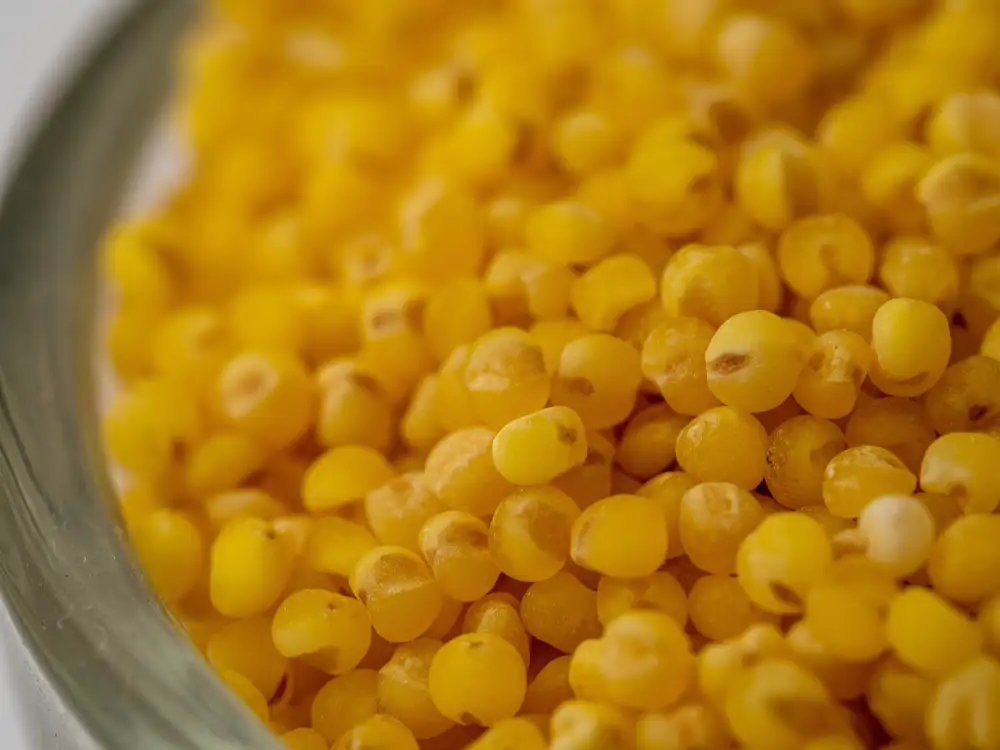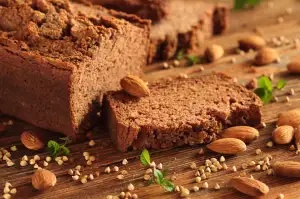Mastering the Art of Cooking Millet: A Step-by-Step Guide to Perfectly Cooked Millet

- Step-by-Step Guide on Cooking Millet
- Rinse the Millet
- Toast the Millet (Optional)
- Boil the Water
- Add Millet to Boiling Water
- Reduce Heat and Simmer
- Fluff and Serve
- Tips for Perfectly Cooked Millet
- Proper Water-to-Millet Ratio
- Adjusting Cooking Time
- Adding Flavor with Broth or Herbs
- Experimenting with Different Cooking Methods
- Millet Serving Suggestions and Recipe Ideas
- Millet Pilaf with Vegetables
- Millet Breakfast Porridge
- Millet Salad with Fresh Herbs
- Millet-Stuffed Bell Peppers
Millet, a small-seeded grain, is gaining popularity as a nutritious and versatile ingredient in the culinary world. Packed with essential nutrients like fiber, protein, and minerals, millet offers numerous health benefits. It is naturally gluten-free and easy to digest, making it an excellent choice for those with dietary restrictions or sensitive stomachs. With its mild flavor and fluffy texture, millet can be used in a variety of dishes, from savory pilafs to comforting porridges. Whether you are looking to incorporate more whole grains into your diet or simply want to explore new flavors, mastering the art of cooking millet will open up a world of delicious possibilities in your kitchen.
Step-by-Step Guide on Cooking Millet
1. Rinse the Millet: Start by rinsing the millet under cold water to remove any dirt or debris.
2. Toast the Millet (Optional): For a nuttier flavor, you can toast the millet in a dry skillet over medium heat for a few minutes until it becomes fragrant.
3. Boil the Water: In a saucepan, bring water to a boil. The general rule is 2 cups of water for every 1 cup of millet.
4. Add Millet to Boiling Water: Once the water is boiling, add the rinsed millet and give it a stir.
5. Reduce Heat and Simmer: Reduce the heat to low, cover the saucepan with a lid, and let it simmer for about 15-20 minutes or until all the water is absorbed.
6. Fluff and Serve: Remove from heat and let it sit covered for 5 minutes. Then fluff the millet with a fork before serving as desired.
Rinse the Millet
Rinsing millet is an important step before cooking to remove any dirt or debris. To rinse, place the millet in a fine-mesh sieve and run it under cold water. Gently swish the millet around with your fingers to ensure all grains are rinsed thoroughly. Continue rinsing until the water runs clear. This step helps improve the texture and taste of the cooked millet by removing any bitterness or impurities. Once rinsed, you're ready to move on to the next step in cooking this nutritious grain.
Toast the Millet (Optional)
Toasting the millet is an optional step that can enhance its nutty flavor and add a delightful crunch to your dishes. To toast the millet, simply heat a dry skillet over medium heat and add the rinsed millet. Stir constantly for about 3-4 minutes until the millet turns golden brown and releases a fragrant aroma. Be careful not to burn it! Toasting the millet adds depth to your recipes and takes them to a whole new level of deliciousness.
Boil the Water
To cook millet, start by boiling water in a saucepan. The amount of water needed depends on the desired texture of the millet. For fluffy millet, use 2 cups of water for every 1 cup of millet. Once the water comes to a rolling boil, add the rinsed millet and stir gently. Reduce the heat to low and cover the saucepan with a lid. Allow the millet to simmer for about 15-20 minutes or until all the water is absorbed and the grains are tender.
Add Millet to Boiling Water
Once the water is boiling, it's time to add the millet. Carefully pour the rinsed millet into the pot of boiling water. Stir gently to make sure all the grains are submerged in the water. Be cautious as the steam may be hot. Reduce the heat to low and cover the pot with a lid. Let it simmer for about 15-20 minutes or until all the water has been absorbed and the millet is tender. Avoid lifting the lid too often as this can disrupt the cooking process.
Reduce Heat and Simmer
Once you have added the millet to the boiling water, reduce the heat to low and cover the pot with a lid. Allow the millet to simmer for about 15-20 minutes or until all the water has been absorbed. Simmering allows the millet to cook evenly and absorb all the flavors of the water. Avoid stirring during this process as it may cause the millet to become sticky. After simmering, remove the pot from heat and let it sit covered for an additional 5 minutes. This resting period helps to fluff up the grains and ensures that they are fully cooked.
Fluff and Serve
Once the millet is cooked and the water has been absorbed, it's time to fluff and serve. Using a fork, gently fluff the millet to separate the grains and create a light, fluffy texture. This will prevent the millet from clumping together.
Once fluffed, you can serve the millet as a side dish or use it as a base for various recipes. Its mild flavor makes it a versatile grain that pairs well with both savory and sweet ingredients. Whether you're adding it to salads, stir-fries, or using it as a substitute for rice or couscous, millet adds a nutritious twist to any meal.
Remember to season your cooked millet with salt and pepper according to your taste preferences before serving. Enjoy the nutty flavor and delicate texture of perfectly cooked millet in your favorite dishes!
Tips for Perfectly Cooked Millet
1. Proper Water-to-Millet Ratio: To ensure fluffy and well-cooked millet, use a 2:1 ratio of water to millet. For example, if you are cooking 1 cup of millet, use 2 cups of water.
2. Adjusting Cooking Time: Cooking time may vary depending on the type and freshness of millet. Start with the recommended cooking time on the package and adjust accordingly. If the millet is still undercooked, add a little more water and continue simmering until it reaches the desired texture.
3. Adding Flavor with Broth or Herbs: Enhance the taste of your cooked millet by using vegetable or chicken broth instead of plain water. You can also add herbs like thyme or rosemary while cooking to infuse extra flavor into the grains.
4. Experimenting with Different Cooking Methods: While boiling is the most common method for cooking millet, you can also try steaming or using a rice cooker for variation. Each method may result in slightly different textures and flavors, so don't be afraid to experiment!
Remember these tips to achieve perfectly cooked millet every time and elevate your dishes with this versatile grain!
Proper Water-to-Millet Ratio
Proper Water-to-Millet Ratio: The key to perfectly cooked millet lies in the water-to-millet ratio. For every cup of millet, use two cups of water. This ensures that the grains cook evenly and absorb the right amount of moisture. Adding too much water can result in mushy millet, while too little water can leave it undercooked and dry. Remember to measure your ingredients accurately for best results.
Adjusting Cooking Time
The cooking time for millet can vary depending on the desired texture. For a softer, more porridge-like consistency, cook the millet for around 20-25 minutes. If you prefer a firmer texture, reduce the cooking time to 15-20 minutes. Keep in mind that altitude and the type of pot used can also affect cooking time, so it's important to keep an eye on the millet as it cooks and adjust accordingly. Remember, practice makes perfect, so don't be afraid to experiment with different cooking times to find your preferred level of tenderness.
Adding Flavor with Broth or Herbs
To take your millet to the next level, consider adding flavor with broth or herbs. Instead of cooking millet in plain water, try using vegetable or chicken broth for a more savory taste. The broth will infuse the grains with rich flavors and enhance the overall dish. You can also experiment with adding herbs such as thyme, rosemary, or parsley to give your millet a burst of freshness. Simply add these ingredients to the boiling water before adding the millet and let them simmer together. The result will be a deliciously flavored millet that can be enjoyed on its own or as a base for other dishes.
Experimenting with Different Cooking Methods
While the traditional stovetop method is the most common way to cook millet, there are other cooking methods you can try to add variety to your dishes. One alternative method is using a rice cooker, which takes away the need for constant monitoring and allows for hands-free cooking. Simply rinse the millet, add it to the rice cooker along with the appropriate amount of water, and let it cook according to the rice cooker's instructions.
Another option is using an Instant Pot or pressure cooker. This method significantly reduces cooking time and produces fluffy and perfectly cooked millet. Rinse the millet, add it to the Instant Pot along with water or broth, and set it on high pressure for about 10 minutes. Allow natural release for a few minutes before opening the lid.
For those who prefer a nuttier flavor and chewier texture, consider roasting millet in the oven before cooking. Spread rinsed millet on a baking sheet and toast it at 350°F (175°C) for about 10 minutes until golden brown. Then proceed with boiling water and simmering as usual.
By experimenting with different cooking methods, you can discover new flavors and textures that enhance your millet dishes. Whether you choose a rice cooker, Instant Pot, or oven-roasting technique, each method brings its own unique twist to this versatile grain. So don't be afraid to get creative in your kitchen and explore all the possibilities that millet has to offer!
Millet Serving Suggestions and Recipe Ideas
1. Millet Pilaf with Vegetables: Sauté onions, garlic, and your favorite vegetables. Add cooked millet and season with herbs and spices for a flavorful side dish or main course.
2. Millet Breakfast Porridge: Cook millet with milk or water until creamy. Sweeten with honey or maple syrup, and top with fruits, nuts, and a sprinkle of cinnamon for a nutritious and satisfying breakfast.
3. Millet Salad with Fresh Herbs: Combine cooked millet with chopped fresh herbs like parsley, mint, and cilantro. Toss in some diced tomatoes, cucumbers, and a tangy lemon dressing for a refreshing summer salad.
4. Millet-Stuffed Bell Peppers: Mix cooked millet with sautéed onions, garlic, diced vegetables, and your choice of protein (such as ground turkey or tofu). Stuff the mixture into bell peppers, bake until tender, and enjoy a deliciously wholesome meal.
Get creative in the kitchen and explore the endless possibilities of incorporating millet into your cooking repertoire!
Millet Pilaf with Vegetables
Millet Pilaf with Vegetables is a delicious and nutritious dish that showcases the versatility of millet. To make this flavorful pilaf, start by sautéing diced onions, carrots, and bell peppers in a bit of olive oil. Once the vegetables are tender, add rinsed millet to the pan and toast it for a few minutes to enhance its nutty flavor. Then, pour in vegetable broth and bring it to a boil. Reduce the heat, cover the pan, and let it simmer for about 20 minutes or until the millet is cooked through and fluffy. Season with salt, pepper, and your favorite herbs like thyme or parsley. Serve this hearty pilaf as a side dish or add some protein like grilled chicken or tofu to make it a complete meal.
Millet Breakfast Porridge
Millet Breakfast Porridge is a delicious and nutritious way to start your day. To make this comforting dish, simply follow the steps outlined in our guide. Once the millet is cooked, you can add your favorite toppings such as fresh fruits, nuts, honey, or cinnamon for added flavor and texture. This creamy and filling porridge will keep you satisfied until lunchtime while providing you with essential nutrients and energy. Give it a try and enjoy a wholesome breakfast that will fuel your day!
Millet Salad with Fresh Herbs
Millet Salad with Fresh Herbs: A light and refreshing option for a summer meal, millet salad with fresh herbs is a delightful way to enjoy the nutty flavor of millet. Start by cooking the millet following the step-by-step guide mentioned earlier. Once the millet is cooked and cooled, mix it with a variety of chopped fresh herbs such as parsley, mint, and cilantro. Add some diced tomatoes, cucumber, and red onion for extra freshness. Drizzle with a simple dressing made from olive oil, lemon juice, salt, and pepper. Toss everything together until well combined. This vibrant salad can be served as a side dish or as a main course by adding grilled chicken or shrimp. Enjoy the burst of flavors and textures in every bite!
Millet-Stuffed Bell Peppers
Millet-Stuffed Bell Peppers are a delicious and nutritious option for a hearty meal. To make this dish, start by preheating your oven to 375°F (190°C). Cut the tops off the bell peppers and remove the seeds and membranes. In a skillet, heat some olive oil over medium heat and sauté onions, garlic, and any other vegetables of your choice. Add cooked millet to the skillet along with some tomato sauce, herbs, and spices. Stir well to combine all the ingredients. Stuff each bell pepper with the millet mixture and place them in a baking dish. Bake for about 25-30 minutes or until the peppers are tender. Serve hot and enjoy this flavorful and satisfying meal!
In conclusion, mastering the art of cooking millet opens up a world of delicious possibilities. This nutritious grain can be used in a variety of dishes, from pilafs and salads to breakfast porridge and stuffed peppers. With its mild flavor and fluffy texture, millet serves as a versatile base for both sweet and savory recipes.
By following our step-by-step guide and incorporating our tips for perfectly cooked millet, you can confidently experiment with different flavors and cooking methods. Whether you prefer toasting it for a nutty taste or adding broth and herbs for extra flavor, millet can easily adapt to your culinary preferences.
So go ahead and explore the wonderful world of millet. Let your creativity shine through as you create mouthwatering meals that are not only delicious but also packed with essential nutrients. From hearty main courses to comforting breakfasts, millet is sure to become a staple in your kitchen. Enjoy the versatility of this ancient grain and elevate your cooking to new heights!
Published: 07. 12. 2023
Category: Food



